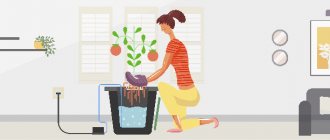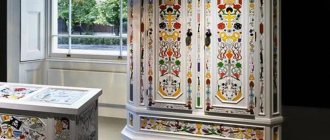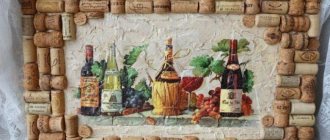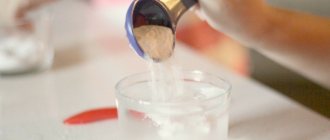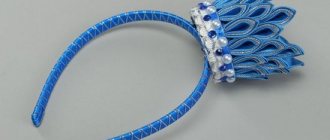A projector, a high-quality audio system and a screen on the wall allow you to create the atmosphere of being in a real cinema at home. Multimedia projectors suitable for these purposes cost from 40,000 rubles, sound systems are even more expensive. And the price of the most budget screens starts from 2500–3000 rubles. Many people wonder whether a piece of white fabric is worth that kind of money and whether it is possible to make a screen for a projector with your own hands.
If you use this equipment in an office, cafe or at an exhibition, where video is just a background creating an atmosphere or a way to convey information, where image quality is not particularly important, then there really is no point in overpaying. In such conditions, even the most expensive equipment will not show all its advantages due to inappropriate lighting, extraneous noise, too open or, conversely, cramped space.
But if you set out to imitate a full-fledged cinema at home, think several times about whether it’s worth saving on such an important part. Imagine that you have invested hundreds of thousands of rubles in furnishing a room with the necessary lighting and acoustic conditions, a high-quality projector, a stereo system, and suddenly you hang a homemade piece of fabric on the wall. Whether you can choose really high-quality material and save money is a big question.
What can a projector screen be made from?
If you are puzzled by the question of how to make a screen for a projector with your own hands without losing quality, first of all, you need to know what material is used in professional equipment, why and what properties will be critical for it.
The standard material is a vinyl sheet with different properties of density, texture, light reflection, and different coating. The situation often arises that only the central part of the purchased material is bright, and clarity is lost towards the edges. It is difficult to achieve high contrast and completely black color on the widely advertised matte screens at home; they are only suitable for conditions of complete darkness. And at home, even at night there is usually a weak light from the windows. There are surfaces with very high levels of light reflection, which create the effect of glowing from the inside, but are not comfortable for the home due to an inappropriate viewing angle: only part of the picture is visible clearly. Canvases in different shades of gray are gaining popularity, allowing for good color depth and clear blacks.
Let's look at what you can use to make a projector screen at home:
- Banner fabric. Sold by advertisers, it is relatively inexpensive, from 300 rubles per sheet. In online stores, the material is sold in rolls of 40–50 meters, so you need to look for outdoor advertising companies in your city and buy the required size from them. The main important property is opacity; the canvas should transmit light as poorly as possible. Material for double-sided printing with an internal black layer is ideal, preferably matte, because there will be glare on the gloss. It’s not at all difficult to make a screen for a projector from a banner yourself, and its quality will be no worse than src=”https://nastroyvse.ru/wp-content/uploads/2017/04/bannernaya-tkan-dlya-ekrana.jpg "class="aligncenter" width="1000″ height="708″[/img]
- Canvas for suspended ceilings. It lures many people because it has a matte texture and can be gray in color; it is easy to achieve perfect evenness (after heating with a hairdryer, it fits perfectly onto the frame). But there is also a significant drawback: transparency is high, so making a projection screen from this material is still not recommended. Unless you put some kind of black film under it, but in this case the question of the cost of the structure arises.
- Various types of hard materials: polystyrene, plywood, marker board, etc. In principle, this is the most budget-friendly option to make your own cinema from improvised materials lying around after renovation. But you shouldn’t expect particularly high picture quality, although the issue of illumination and smoothness of the surface itself are important here. Many people resort to painting with ordinary water-based paint, and it turns out quite well.
- Professional paint created specifically for such purposes. It is advisable to use it at the stage of planning and final renovation of the premises. It only requires a prepared smooth surface and is applied evenly with a sprayer. The range is huge: from regular white to color with the super ability to display 4K mode. Yes, there is a point, the price starts from 500 euros per jar, which is enough for a diagonal of about 3 meters.
Transparent display - reality or myth?
cavalorn
For print
The photos and videos of the iPhone 5 and iPad with a transparent screen that have excited the public are, of course, fake and created using programs that create the illusion of reality.
But.
The good news is that phones and tablets with transparent screens are quite possible in reality, the bad news is that they are inconvenient.
Docomo and Fujitsu have created a prototype of a transparent display (video) with multi-touch (the touchscreen works on both sides).
This research may inspire designers to take part in some fantastic design concepts from Fujitsu (video) - like this display that switches between transparent and opaque mode: now it shows the words in a book, and a second later the words are translated into another language (similar to pretty Word Lens app (video).
The Concept Phones blog (photo) has been publishing interesting photos of transparent phones for several years now, so as a design feature this is already commonplace.
Projector screen made of banner fabric
The most popular, budget-friendly and easy-to-make screen option for any projector is to make it from an advertising banner. It’s better not to take a used banner, because at the very least it will be wrinkled and dirty. Buy a size with a reserve and start making:
- Create a base frame. It can be made from planed wooden beams, hammered together with metal corners into something like a frame with a crossbar. The structure must be rigid and even: measure everything according to the level. It is necessary to maintain the proportions of the visible part of the canvas: 4:3 for standard video, 16:9 for HDTV.
It’s more convenient and quick to make a base from a regular metal curtain rod: cut it with a turbine to the required length, insert it into the fastenings in the upper rod, and just plugs in the lower rod.
- Carefully lay out the banner canvas on the floor. If the structure is wooden, then secure the panel from the back using a construction stapler. If you use a metal rod, then glue the canvas with super glue. If the rod is wooden, then you can use both glue and a stapler.
- Attach the structure to the wall.
The screen made from a banner is unpretentious, does not fade and does not lose its properties. In general, a good and budget option.
If you have the desire and time to make something more complex, then you can make the design collapsible and even add automation. Some craftsmen manage to create a screen for a projector with an electric drive:
- 2 metal or wooden pipes are used, onto which banner fabric is attached (on top and bottom of the canvas).
- The upper pipe is inserted into a wider one (you can use a plastic sewer pipe) using bearings along the edges. The bearings must be tightly seated on the pipe on which the fabric is wound so that it does not slip.
- A lifting mechanism is made on one side. The drive can be made mechanical; for this, a bolt as an axis and a torque lever are enough. In the case of an electric drive, in addition to the axle, an electric lifting mechanism is needed.
- You can use a window lift mechanism from a car, an electric screwdriver, a part from a toy, and the like. In addition, you will need a power supply, suitable from an old computer.
- Next, you need to connect everything correctly, you will need basic knowledge in the field of radio electronics, and securely attach it to the wall.
- Many even manage to make a remote control for the design by purchasing the necessary electrical parts in Chinese online stores.
Modules for assembly
A screen of the required dimensions is assembled from ready-made electronic blocks (modules) of standard sizes, equipped with pixels from LEDs or RGB assemblies, connected on a common board and having the necessary connectors and cables for integration with neighboring blocks. Modules, as a rule, are made in China and have a lower price, and are purchased from specialized companies and stores. The P10 modules have a set of typical parameters:
- size, mm – 320 x 160 x 20;
- module weight, g – 600–700;
- pixel pitch, mm – 10;
- resolution (number of pixels per 1 m2) – no less than 256 x 192;
- LED screen brightness, cd/m2 – 6,000–7,000;
- half-brightness angle, degree – 120;
- service life, hour – up to 50,000;
- maximum power consumption (for outdoor screens), W/m2 – 500;
- distance of comfortable visibility of images, m – from 7;
- All light and electronic components are protected from moisture, dust, and mechanical influences.
P10 modules of different colors
If there are no modules, you can assemble an LED screen based on an LED strip. But this option is more labor-intensive to assemble and does not have the necessary reliability under harsh conditions of outdoor use: a wide range of temperatures, humidity, UV exposure, dust, dirt, etc.
Using paint to make your own screen
It happens that the desire to make a screen for a projector with your own hands arises not for reasons of economy, but in pursuit of better image quality. Then the thought arises about painting the surface. Before we talk about professional offers, let's mention homemade options. If you made a banner from plywood laminated with chipboard, you can paint the surface. The most economical way is regular white water-based emulsion. Many people use gray or silver car paint. On Internet forums there are recipes for mixing different shades of acrylic paints. Reflective paint has proven itself well, as in road signs and on license plates. When conducting experiments, you should not forget about the budget that is spent on it. Does it make sense to try if there are already professional solutions: special paint for the surface used as a screen.
The manufacturer offers selection of paint to suit your lighting conditions, projector parameters, and allows you to play 4K, 8K UHD video. The paint is characterized by correct color rendering, light absorption and high image clarity. Using it won't be difficult either:
- It is necessary to calculate the maximum possible size based on the area of the room and the characteristics of the projector.
- Next, the boundaries are marked on the prepared wall. The main requirement is to have as smooth a surface as possible. Preparation with a good quality finishing putty is suitable.
- Painting tape is attached around the perimeter.
- Painting is done in stripes from top to bottom, preferably with a spray for a better result.
A self-made screen, in addition to all the advantages in price and quality, will also be a source of pride, a part of the interior, invented and created according to an individual project to suit your preferences. If you have ideas on what else you can use to make a projector screen, leave a comment below.
Arduino hardware platform
To create a program for controlling LED video devices (screens, tickers), there is a large selection of different products on the market. One of the most popular is the Arduino hardware and computing platform, which includes an I/O board and development tools.
Arduino is used both for developing stand-alone interactive objects and for connecting to software products running on a computer. The boards have analog and digital ports to which various automation devices can be connected: sensors (temperature, humidity, pressure, etc.), buttons, motors, motors, video screens, tickers.
We can say that Arduino is a tool for designing various electronic devices. The software platform is made with open source code based on the C/C++ programming language. Projects implemented using Arduino can function either independently or interact with computer software (MaxMSP, Flash, Processing).
Arduino programmable controller board
What tools are needed
To make your own projector screen, you will need a large set of tools:
- selected material;
- 4 wooden beams according to the size of the canvas;
- 5 aluminum boxes;
- 4 sides for the frame;
- stapler (construction);
- thin felt;
- screwdriver;
- fiberboard sheet;
- construction knife;
- metal scissors;
- white matte paint;
- roller;
- emery cloth;
- wood screws.
Some fixtures may not be needed depending on the material chosen. It is very important to accurately calculate the parameters of the canvas, because several additions are purchased for them at once.
Application of sensors in practice
All three technologies are in demand when applied to touch monitors. The resistive type was widely used in the past, but is still found today. This is what is interesting in terms of how to make a regular monitor touchscreen, but more on that below. Capacitive sensors are used in almost all modern displays that were originally touch-sensitive. Wave touchscreens, as mentioned above, are used in banking, industrial, medical and other specific equipment. Thanks to the enterprising Chinese, they are also interesting when converting a regular monitor into a touch screen.
Applications and objectives of transparent LED screens
Transparent LED screens are large-scale structures used mainly for advertising purposes or as part of events, shows, and concerts. The main areas of use of transparent LED displays:
- advertising against the backdrop of building facades - a screen covering an entire wall will not go unnoticed even from hundreds of meters, high brightness ensures an attractive picture, and video broadcast in this format is visible in any weather;
- advertising against the background of shop windows, indoor advertising is an effective tool that will help not only draw customers’ attention to a store or salon, but also distinguish it from competitors;
- design of premises, events - transparent screens are used for original, modern design of shopping centers, office buildings, airports, exhibition halls, showrooms, they are also used at shows and concerts;
- luminous shaped structures - the grid can be placed not only in one plane, so it becomes possible to create screens of non-standard shapes.
Size calculation
To correctly determine the size of the canvas, you need to understand the main rule: the screen is in front of the audience, not the projector. The viewing angle depends on this, otherwise after installation you will have to redo the work. Before starting the calculations, you need to turn on the projector and point it at the wall, selecting your preferred video format.
The height of the canvas should be 1/6 of the distance between the screen and the last row of viewers. Violation of this proportion will lead to the fact that viewers sitting behind will not see the picture clearly.
There is also a rule for the first row - it should be at a distance equal to twice the height of the screen. In order for the bottom edge of the screen to be clearly visible, it must retreat from the floor by at least 1.2 m. Of course, in a home theater there are rarely more than 2-3 rows, but it is better to take into account the recommendations - with them the screen will be visible without unnecessary eye strain .
